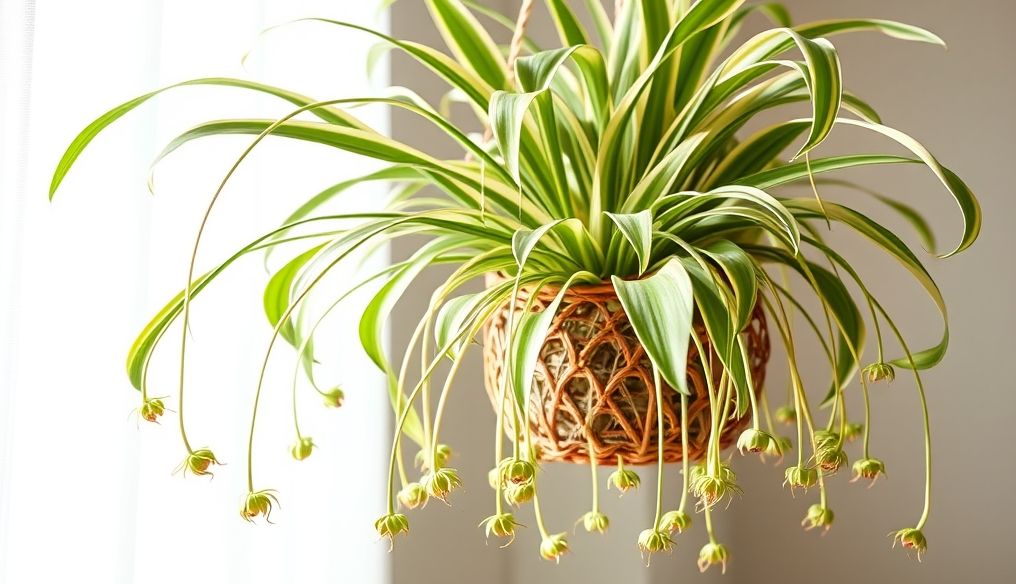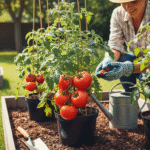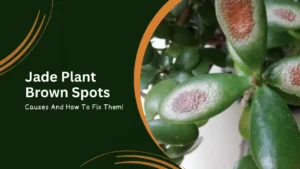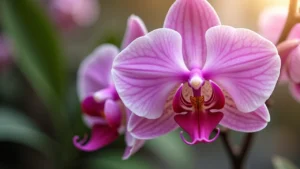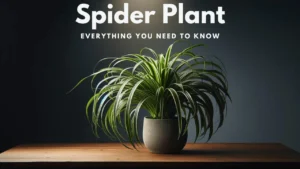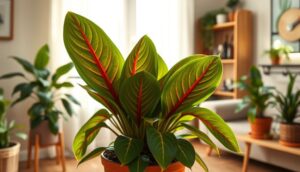If there’s one houseplant I’d recommend to every single person—from the absolute beginner to the seasoned indoor jungle enthusiast—it’s the magnificent Spider Plant (Chlorophytum comosum).
In my two decades of gardening, I’ve seen trends come and go, but the Spider Plant remains an enduring favorite. And for good reason! It’s one of the most resilient and forgiving plants you can bring into your home. With its graceful, arching, often variegated leaves, it brings an instant touch of life and beauty to any corner.
But the appeal goes beyond aesthetics. The Spider Plant is famously one of NASA’s top-rated air-purifying plants, diligently working to scrub toxins like formaldehyde and xylene from your indoor air. Adaptable, beautiful, and hard-working—what more could a plant lover ask for?
Ready to unlock the secrets to a thriving, “pup”-producing champion? Let’s dive into the ultimate how to care for a spider plant guide, straight from my years of hands-on experience.
Table of Contents
Spider Plant Overview
The Spider Plant gets its charming, slightly intimidating name from the “spiderettes” or little plantlets that dangle from its long, fleshy stems (stolons), giving it the appearance of a hanging spider or, to my eye, a living green firework.
Native to Southern and Tropical Africa, this herbaceous perennial has truly global appeal. It’s cherished for its fast growth, low-maintenance nature, and incredible versatility. Whether you’re looking for an impressive hanging basket specimen or a stunning desk plant, the Spider Plant’s robust nature and easygoing temperament make growing spider plant indoors a truly rewarding experience.
Spider Plant Quick Care – Table Format
For those who need the essentials at a glance, here are the key facts about spider plant care tips:
| Attribute | Detail |
| Scientific Name | Chlorophytum comosum |
| Common Name | Spider Plant, Airplane Plant, Ribbon Plant, Spider Ivy |
| Native Region | Southern and Tropical Africa |
| Light Requirements | Bright, indirect light; tolerates low light but growth slows. |
| Watering Needs | Water thoroughly when the top inch of soil is dry. Sensitive to overwatering. |
| Propagation | Very easy! Via “spiderettes” (offsets/pups) or division. |
| Toxicity | Non-toxic to cats and dogs (Pet-safe) |
| Growth Rate | Fast |
| Ideal Temperature | 65∘F – 75∘F (18∘C – 24∘C) |
Spider Plant Requirements – Table Format
Here’s a deeper look into the botanical profile and specific environmental needs of this popular houseplant.
| Attribute | Detail |
| Hardiness | Tender (typically grown indoors) |
| Climate Zones | USDA Zones 9–11 (for outdoor planting) |
| Plant Type | Herbaceous Perennial Houseplant |
| Plant Family | Asparagaceae (Asparagus Family) |
| Plant Genus | Chlorophytum |
| Season of Interest | Year-round foliage, summer flowers/spiderettes |
| Height | 1–2 feet (30–60 cm) |
| Spread | 2–2.5 feet (60–75 cm) |
| Spacing | Dependent on container size; usually 1-2 feet for display. |
| Depth | Plant in soil at the same depth as in the nursery pot. |
| Maintenance | Low |
| Soil Type | Well-draining, standard potting mix |
| Soil pH | Slightly acidic to neutral (pH 6.0–7.0) |
| Soil Drainage | Excellent drainage is crucial. |
How to Care for a Spider Plant: Detailed Instructions
Caring for this plant is genuinely simple, but like any living thing, it has preferences. Based on my years in the field, here is the breakdown of the most critical elements of Spider Plant care.
Spider Plant Light Requirements
Getting the light right is the single most important factor for robust growth and vibrant variegation.
- The Sweet Spot: Spider Plants thrive in bright, indirect light. Think of a few feet away from an east- or west-facing window, or near a south-facing window shaded by a sheer curtain. This light level encourages quick growth and abundant plantlets.
- The Risk of Direct Sun: While they can tolerate a little morning sun, prolonged, harsh direct sunlight will scorch the leaves, leaving behind unsightly white or brown burn marks.
- Low Light Tolerance: Spider plants are adaptable and will survive in low-light conditions, but they will look spindly, their growth will slow dramatically, and they will produce far fewer “spiderttes.”
- For Variegated Varieties: If you have a variety with white or cream stripes (like ‘Variegatum’), make sure it gets enough bright light to maintain those beautiful markings.
🌿 Pro Gardener Tip
If your variegated spider plant starts losing its beautiful white stripes and the new growth is mostly green, it’s desperately telling you to move it to a brighter spot!
Spider Plant Watering
When it comes to watering spider plant, the biggest mistake beginners make is overwatering. These plants store water in their thick, fleshy roots, making them quite drought-tolerant but susceptible to root rot if kept too soggy.
- The Finger Test: Only water when the top inch of the soil feels dry to the touch. In the summer, this might mean once a week; in the winter, it could be every two or three weeks. Always check the soil first!
- Thorough Soak: When you do water, water deeply until you see it draining from the pot’s bottom. Discard the excess water promptly—never let the pot sit in a saucer of water.
- The Brown Tip Problem: If the tips of your leaves are turning brown, it is often due to the buildup of salts and chemicals (like fluoride and chlorine) found in municipal tap water.
- The Solution: Try using distilled, rainwater, or tap water that has been left out overnight in an open container to allow some chemicals to dissipate.
Spider Plant Soil
A healthy Spider Plant starts with healthy roots, and that means well-draining soil.
- The Formula: A standard, high-quality commercial potting mix is usually fine. I often amend mine with an extra handful of perlite or coarse sand (about 1 part perlite to 3 parts potting mix) to ensure superior drainage.
- The Goal: The soil should retain some moisture but never become waterlogged. Good aeration is key to preventing root rot.
Best Pot for Spider Plant
The pot choice is more critical than you might think, especially for a water-sensitive plant.
- Drainage is Non-Negotiable: Always choose a pot with a drainage hole. If the pot doesn’t have one, it’s not suitable for a Spider Plant unless you use a plastic nursery pot placed inside the decorative pot.
- Material: Terracotta pots are excellent because they are porous and wick away excess moisture, helping prevent overwatering. Plastic pots retain moisture longer, so you’ll need to adjust your watering schedule.
- Hanging Baskets: Spider Plants are ideally suited for hanging baskets, as this allows the beautiful arching foliage and the dangling spiderettes to be displayed fully.
Repotting Spider Plant
A healthy Spider Plant is an aggressive grower!
- When to Repot: You’ll know it’s time to repot when you see roots growing out of the drainage holes, or if the roots have become so dense that they are pushing the plant up and cracking the pot (a common occurrence with older, happy Spider Plants).
- The Process: Move up one pot size (e.g., from a 6-inch to an 8-inch pot) every 1–2 years. Spring is the best time. If you want to keep the plant in its existing pot, lift it out, trim back about a third of the root ball, and repot it with fresh potting mix.
🌿 Pro Gardener Tip
If your spider plant’s pot is bulging or cracking, it’s a sign the plant has developed large, starchy storage roots (tubers). When you repot, gently prune some of these away to make room for new growth and prevent structural damage to your pots.
Spider Plant Temperature
Growing spider plant indoors is successful because they tolerate the typical temperatures found in most homes.
- The Happy Range: The ideal temperature is between 65∘F and 75∘F (18∘C to 24∘C).
- What to Avoid: Keep the plant away from cold drafts from windows or air conditioners, and avoid placing it directly next to heat sources like radiators or vents, as sudden temperature fluctuations can stress the plant. They cannot tolerate freezing temperatures.
Spider Plant Humidity Requirement
Spider Plants are not overly demanding about humidity, which makes them excellent household plants.
- Average Is Fine: Standard household humidity levels are usually acceptable.
- Boosting Humidity: If your home is very dry (especially in winter with the heat running), you might see more brown leaf tips. You can help by misting the foliage occasionally, placing the pot on a pebble tray filled with water, or grouping it with other plants.
Spider Plant Pruning
Pruning is mostly for aesthetics and maintaining plant health.
- Removing Brown or Dead Leaves: Snip off any yellow, brown, or fully dead leaves at the base of the plant using clean, sharp scissors or shears. This improves the plant’s appearance and directs energy to new growth.
- Managing “Spiderettes”: If the long flower stalks with plantlets (spiderettes) become overwhelming, you can simply cut them off. Or, better yet, cut them off and pot them up to give away as gifts! This is the core of how to care for a spider plant and propagate it.
Spider Plant Fertilizer
While they are not heavy feeders, a little boost during the growing season is appreciated.
- When and How Much: Fertilize sparingly during the spring and summer (the active growing season), generally once a month. Use a balanced, water-soluble houseplant fertilizer diluted to half the strength recommended on the label.
- The Danger of Over-Fertilizing: Too much fertilizer can cause salt buildup in the soil, which manifests as tip burn (brown leaf tips). Flush the soil every few months by watering heavily and allowing excess water to drain fully to wash away mineral buildup.
- Winter Rest: Do not fertilize in the fall and winter when the plant’s growth naturally slows down.
🌿 Pro Gardener Tip
Never fertilize a plant that is completely dry. Always water it first, then apply the diluted fertilizer. This prevents fertilizer “burn” on the roots.
Spider Plant Pests and Diseases
Spider Plants are relatively pest-resistant, but they aren’t immune.
- Common Pests: The main culprits are mealybugs, scale, and spider mites.
- The Fix:
- Isolation: Immediately isolate an infested plant to prevent spread.
- Treatment: For minor infestations, wipe the leaves and stems with a cotton swab dipped in rubbing alcohol, or spray the plant thoroughly with insecticidal soap or a diluted neem oil solution. Repeat every 5-7 days until the issue is resolved.
- Diseases: The most common disease issue is root rot, which is almost always caused by overwatering and poor drainage. If the leaves become soft and mushy, cut back on watering immediately and ensure the pot drains fully.
Conclusion
The Spider Plant is a testament to nature’s resilience and beauty. It’s an easygoing, hard-working plant that offers a stunning display of cascading foliage and natural air purification.
By following these practical spider plant care tips—ensuring bright, indirect light, practicing responsible watering, and providing well-draining soil—you will be rewarded with a lush, thriving specimen and a continuous supply of little “spiderettes” to share with friends and family.
Embrace the effortless charm of the Spider Plant, and enjoy a vibrant, healthier indoor space! Happy gardening!

